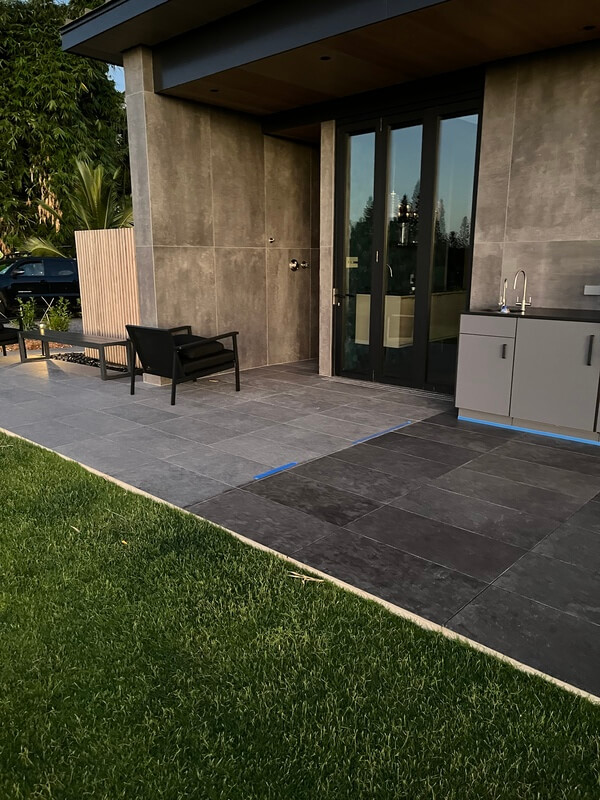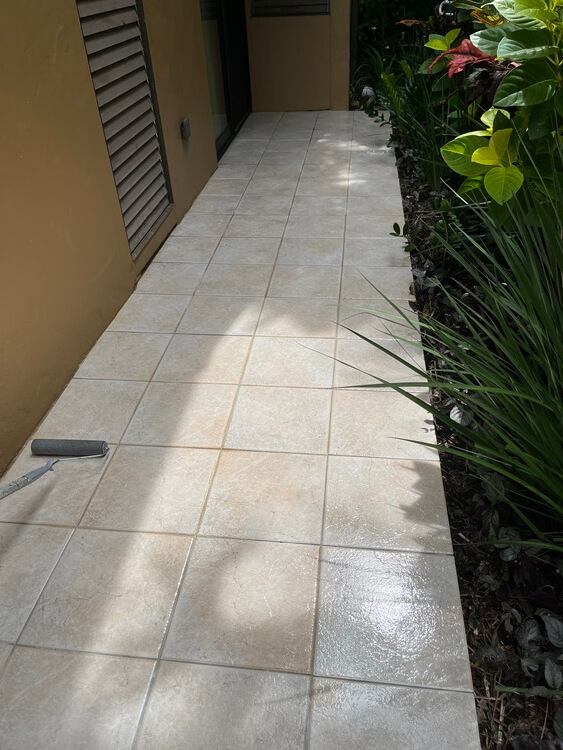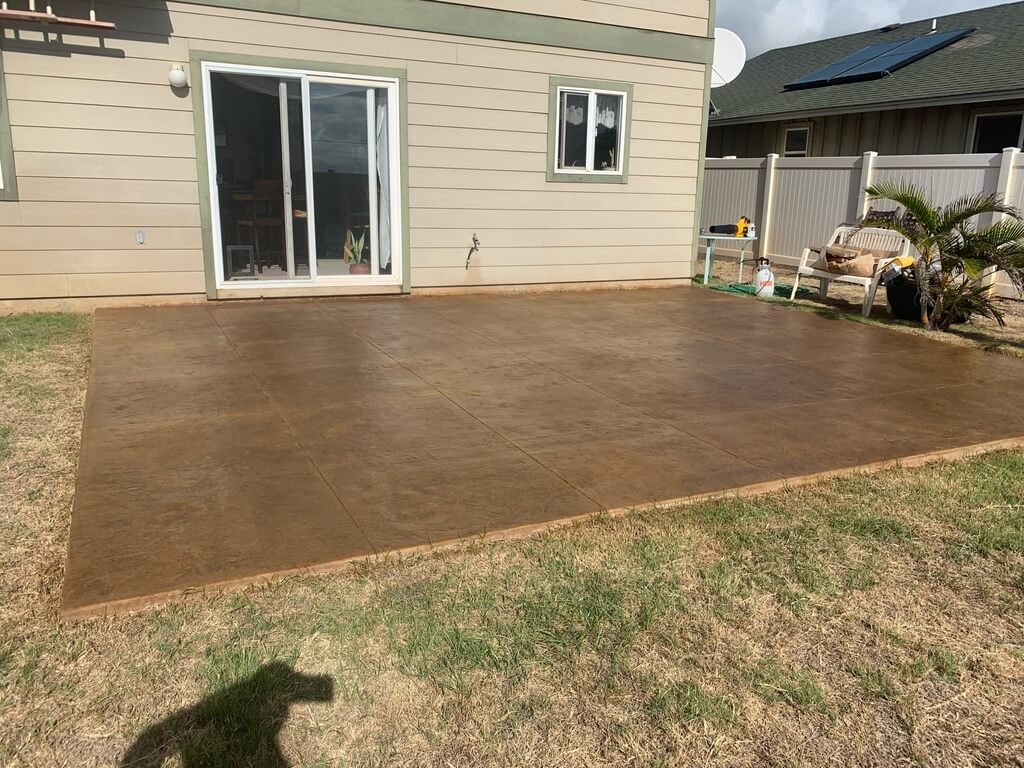Concrete/Stone Sealing
What is Concrete Sealing?
Concrete sealing is the technique of applying a protective coating to concrete surfaces in order to enhance their durability and resistance to weathering, staining, and other types of wear and tear. This protective coating is typically made from a mixture of acrylics, polyurethanes, and other synthetic materials. This is carefully applied to the surface of the concrete/stone using a roller, brush, or sprayer. Once applied, the coating forms a barrier that helps to defend the stone or concrete from moisture, chemicals, and other damaging substances, while additionally improving its appearance and overall performance. Concrete sealing can be used on driveways, patios, sidewalks, and other outside concrete surfaces, as well as high traffic floors and walls in business or industrial settings.
What is the Process of Sealing?
- Surface preparation: The first step is to clean and prepare the stone or concrete by removing any dirt, dust, oil, or other contaminants. This can also involve the use of a pressure washer, a degreaser, or different cleaning solutions. Any cracks or holes in the concrete must also be repaired prior to sealing.
- Applying a primer: A concrete sealer primer is utilized to the surface to put together it for the sealer. The primer is designed to improve the adhesion of the sealer, and to assist it penetrate deeper into the concrete.
- Applying the sealer: The sealer is then applied to the floor using a roller, brush, or sprayer. The sealer is normally applied in thin, even coats, and allowed to dry for a designated amount of time. Then additional coats are applied.
- Curing: After the remaining coat of sealer is applied, the surface is left to remedy for a period of time. Curing lets in the sealer to fully dry and harden, presenting a durable and long-lasting protection.
- Inspection: The ultimate step is to inspect the floor to ensure that the sealer has adhered correctly and that there are no bubbles, runs, or uneven coverage.
- The process can range slightly relying on the type of sealer used and the situation of the concrete surface. It is important to observe the manufacturer's instructions for the unique sealer being used.

Concrete Sealant Benefits
- Protection from the elements: Sealing concrete helps to shield it from the effects of moisture, chemicals, and different contaminants. This can prevent cracking, spalling, and different forms of injury caused with the aid of exposure to the elements.
- Staining resistance: Concrete sealing can assist to prevent staining induced by oil, grease, and different substances. This can help to maintain your concrete looking easy and new for longer.
- Easy maintenance: Sealed concrete is easier to smooth and maintain than unsealed concrete. It is additionally more resistant to staining, so it requires much less frequent cleaning.
- Enhanced appearance: Sealing concrete can beautify the color and usual appearance of the surface, making it appear more shiny and new.
- Increased Durability: Sealed concrete is more long lasting and longer-lasting than unsealed concrete. It is able to stand up to the wear and tear of heavy foot and car traffic, and can help to prolong the life of the concrete surface.
- Cost-effective: Sealing concrete is a competitively priced way to protect and extend the life of your concrete surfaces, sooner or later saving you money on high-priced repairs or replacements in the long run.
- It is essential to note that no longer all concrete surfaces need to be sealed and now not all sealers are the same. It is recommended to seek advice from a professional earlier than making a decision on whether or not to seal or which sealer to use to ensure the fine outcome for your precise surface.

